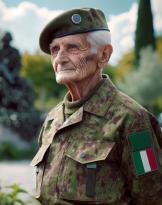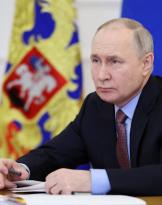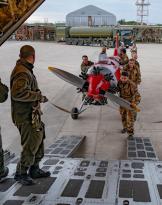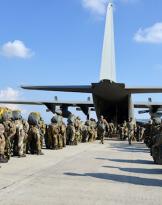In recent weeks, due to a sudden flare-up of tensions on the borders between the Republic of Armenia and the Republic of Azerbaijan, we have tried to bring the attention of the readers of Defense Online to this thorny geopolitical issue by publishing two analytical reports , the first titled Caucasian chaos which explored the problem of the conflict between Armenia and Azerbaijan (and Turkey's cumbersome role in the area) followed by the more technical “Games of Dones” in the South Caucasus instead having as focus the wide use of UAVs and UCAVs recorded in recent years by the contenders.
Although both analyzes obtained excellent feedback from the public, the editorial team of Difesa Online also recorded an expression of dissent coming from a reader (it is not known whether occasional or regular) coming from the academic field. Having written a letter to the editorial staff and expressly called my person into question, accusing me, among other things, of "spreading fake news", I deemed it necessary, for the benefit of the community of readers and to underline the absolute independence and moral and professional integrity of all authors of Defense Online, to return to the topic by publishing both the reader's objections and to expand the vision on the clash between Armenia and Azerbaijan in order to further inform the public so that they can independently rework the issue and decide in full conscience and freedom which bell listen.
Attached to the email was the one which, in the intentions of the author, was to constitute his alternative point of view in relation to the conflict between Armenia and Azerbaijan and which we propose in full below:
"The article by Andrea Gaspardo, Caucasian chaos, which appeared on the defense on July 20, is full of inaccuracies, omissions and real fake news. The conflict between Armenia and Azerbaijan, which unfortunately returned to a phase of direct confrontation this July, appears as a complex issue that cannot be dealt with in a crude way and above all by uncritically taking the sides of one of the contenders against the other.
Let's try, with the spirit of debunking, to highlight the most macroscopic factual errors that in our opinion appear in Gaspardo's writing:
1) the author states that the Armenian occupation of Nagorno Karabakh is a "myth to dispel" and that this territory is a sort of ancestral cradle of the Armenian nation. Nothing more wrong. I will return to the occupation in the next point but as regards the supposed exclusivity of Nagorno Karabakh for the Armenians, this is a mythological consideration. This territory since the name, consisting of Turkish and Russian words, reveals its multicultural and multiethnic nature in which, historically. the Western framework of the mono-ethnic nation state makes no sense. Karabakh was not any Armenian ancestral seat but a geographical space of coexistence of Armenian, Turkish-Azerbaijani, Caucasian (the famous Albàni) Christian and Muslim populations. Populations that have lived together peacefully for centuries. For details, I refer to the volume by Thomas De Waal Black Garden which is also accessible to non-specialist readers of the area. If we really want to point out, in the only phase of its history in which Karabakh was a state entity, it was called Kanhato of Karabakh, a sort of Turkish-Azerbaijani Muslim local principality. It was the Azerbaijani khanate of Karabakh, in 1805, who signed a treaty with Tsarist Russia, paving the way for the domination of St. Petersburg. During the 1918th century, the demographic balance of the region changed. It became a sort of social engineering laboratory of the Russian imperial rule that favored the immigration of Armenians throughout the southern Caucasus, altering the previous demographic balance. In 1923, when Armenia, Georgia and Azerbaijan proclaimed their independence, Azerbaijan - pending a final decision of the peace conference - saw the sovereignty over Karabakh recognized by the Entente powers. So when in XNUMX the autonomous region was established within the now Sovietized Azerbaijan, it can be said that Karabakh was not "assigned to Azerbaijan" but rather kept within the Azerbaijani borders.
2) The author speaks casually of the Armenian occupation of the additional "security zones" with respect to Karabakh. In reality it is omitted that these are seven regions occupied between 1993 and 1994, equivalent to about 20% of the national territory; areas from which about 700.000 Azerbaijani citizens have been expelled which, combined with those uprooted from Karabakh and refugees from Armenia, bring about 1 million people the victims of displacement of the conflict with Armenia. Other than "safety zones", it is a real humanitarian tragedy that has lasted for over a quarter of a century.
3) the argument that the Azerbaijani government would use or be an ally of militias attributable to ISIS is simply ridiculous and smacks of fake news, not even the most sophisticated. The Azerbaijani state is strongly secular, secular with a strict separation between civil and religious institutions. It takes pride in its secular nature and the multi-faith dimension of Azerbaijani society as well as the regulations and institutions that guarantee them. It is sometimes accused of being excessively secular and of using a stern attitude when suspected of an invasion of the political sphere by religion. To think that the world's most fanatical religiously inspired terrorist organization - a Sunni one - allies itself with a government that represents its exact opposite - and a majority Shiite country - is simply science fiction. On the other hand, the sources cited by Gaspardo are at least biased: even the Armenian military secret services! Perhaps a little less "involved" sources would be needed when making an accusation like this.
In conclusion, the writer believes that this conflict must be resolved within the framework of international law starting from the four resolutions of the United Nations Security Council of 1993-1994 which recognize the inviolability of the internationally recognized borders and the territorial integrity of Azerbaijan . Starting from this simple concept, spaces for democratic self-determination of the Armenian minority within the Azerbaijani state must be sought within a framework of international guarantees. Military, secessionist and sovereign assumptions only serve to exacerbate the conflict.
Daniel Pommier Vincelli - Department of communication and social research - Sapienza University of Rome"
Having given Professor Daniel Pommier Vincelli the opportunity to express his theses, I will now refute them one at a time while adding further elements.
 As for POINT NUMBER 1: the reconstruction made by Professor Vincelli is absolutely incomplete. According to the traditional chronicles cited by the venerable Moses of Corene, the historical parable of the Armenians originates with the legend of Hayk who killed the giant Bel, builder of the tower of Babel and tyrant of Babylon, and led his people away from the slavery of Mesopotamian lands. . According to the Armenian scholar, Hayk lived around 2492 BC, using the parallel events narrated in the Bible as a chronological anchor. If we look instead at the archaeological finds, we see that the first traces of Armenian culture date back to 6500 BC, in an area that goes from the eastern offshoots of the Anatolian Taurus to the southern offshoots of the Caucasus and having as one of its focal points precisely the area between today's Naxçıvan territories, the Armenian province of Syunik and the territory of Nagorno-Karabakh (Artsakh). The persistence of a coherent culture transmitted first in oral form and then in written form and the almost obsessive refusal of ethnic assimilation towards finite peoples and countries for a period of over 8500 make Armenians (in Armenian language "Hayer", who it can literally translate as: “the sons of Hayk”) one of the oldest peoples in the world and the second longest-lived in the Middle East and Caucasus, surpassed only by the Georgians. In the matter of this very long time span, the Armenians inhabited a vast area of the Middle East and the Caucasus represented in "figure 1", expanding or narrowing their territory according to the possibilities and events that characterized all the historical eras of which were witnesses. It is also obvious that, throughout the historical period of their existence and throughout their vast territory of settlement, the Armenians shared the physical space with a myriad of other peoples of all kinds, but without ever losing their identity and specificity. cultural. Within this vast area of settlement, the territory of Nagorno-Karabakh (Artsakh) deserves a particular mention because it is the only territory of this area that presents an uninterrupted continuity of the Armenian presence from its origins to the present day, as demonstrated from archeology beyond any doubt. If the link between the Armenians and Nagorno-Karabkh (Artsakh) was not really ancient and was instead only the fruit of a "modern mythology", as the teacher states, then someone should explain to me why in the territory of Nagorno-Karabakh (Artsakh ) there are over 4000 historical monuments of Armenian origin and only 10 of Islamic origin (Arab or Persian Safavid depending on the epoch) and that among the local Armenian archaeological heritage the remains of the city of Tigranocerta dell'Arstakh, one of the various cities all called with the same name founded by the Armenian Great King Tigrane II the Great, found in the territory of the Askeran province of the Republic of Artsakh by a team of international archaeologists led by our compatriot, the professor and historian Giusto Traina? Continuing with the teacher's reasoning, there are different interpretations on the origin of the term "Karabakh" and the one that has so far been the most successful sees this term as a derivative of the Turkish-Persian compound "kara" and "bagh" which we can translate as "Garden Nero ”because of its impenetrable mountain forests, so different from the rest of the Armenian Plateau that it is mostly bare and parched by the sun, however this tells us nothing about the traditional ethnic composition of the local populations. To find an answer, we need to dig into history and demography, the latter science which has always been the central pillar of all my analyzes.
As for POINT NUMBER 1: the reconstruction made by Professor Vincelli is absolutely incomplete. According to the traditional chronicles cited by the venerable Moses of Corene, the historical parable of the Armenians originates with the legend of Hayk who killed the giant Bel, builder of the tower of Babel and tyrant of Babylon, and led his people away from the slavery of Mesopotamian lands. . According to the Armenian scholar, Hayk lived around 2492 BC, using the parallel events narrated in the Bible as a chronological anchor. If we look instead at the archaeological finds, we see that the first traces of Armenian culture date back to 6500 BC, in an area that goes from the eastern offshoots of the Anatolian Taurus to the southern offshoots of the Caucasus and having as one of its focal points precisely the area between today's Naxçıvan territories, the Armenian province of Syunik and the territory of Nagorno-Karabakh (Artsakh). The persistence of a coherent culture transmitted first in oral form and then in written form and the almost obsessive refusal of ethnic assimilation towards finite peoples and countries for a period of over 8500 make Armenians (in Armenian language "Hayer", who it can literally translate as: “the sons of Hayk”) one of the oldest peoples in the world and the second longest-lived in the Middle East and Caucasus, surpassed only by the Georgians. In the matter of this very long time span, the Armenians inhabited a vast area of the Middle East and the Caucasus represented in "figure 1", expanding or narrowing their territory according to the possibilities and events that characterized all the historical eras of which were witnesses. It is also obvious that, throughout the historical period of their existence and throughout their vast territory of settlement, the Armenians shared the physical space with a myriad of other peoples of all kinds, but without ever losing their identity and specificity. cultural. Within this vast area of settlement, the territory of Nagorno-Karabakh (Artsakh) deserves a particular mention because it is the only territory of this area that presents an uninterrupted continuity of the Armenian presence from its origins to the present day, as demonstrated from archeology beyond any doubt. If the link between the Armenians and Nagorno-Karabkh (Artsakh) was not really ancient and was instead only the fruit of a "modern mythology", as the teacher states, then someone should explain to me why in the territory of Nagorno-Karabakh (Artsakh ) there are over 4000 historical monuments of Armenian origin and only 10 of Islamic origin (Arab or Persian Safavid depending on the epoch) and that among the local Armenian archaeological heritage the remains of the city of Tigranocerta dell'Arstakh, one of the various cities all called with the same name founded by the Armenian Great King Tigrane II the Great, found in the territory of the Askeran province of the Republic of Artsakh by a team of international archaeologists led by our compatriot, the professor and historian Giusto Traina? Continuing with the teacher's reasoning, there are different interpretations on the origin of the term "Karabakh" and the one that has so far been the most successful sees this term as a derivative of the Turkish-Persian compound "kara" and "bagh" which we can translate as "Garden Nero ”because of its impenetrable mountain forests, so different from the rest of the Armenian Plateau that it is mostly bare and parched by the sun, however this tells us nothing about the traditional ethnic composition of the local populations. To find an answer, we need to dig into history and demography, the latter science which has always been the central pillar of all my analyzes.
 Both the teacher and all the apologists of Azerbaijan when they speak of "Karabakh" mean the territory of the so-called "Kharabakh Khanate", a semi-independent Turkish-speaking khanate subjected to vassalage against Safavid Persia and formally lasted from 1748 to 1822 when the he entire territory came under the control of the Russian Empire. In territorial terms, the "Karabakh Khanate" included what today would be, going from west to east: the territories of Zangezur (today Armenian province of Syunik), modern Nagorno-Karabakh (Artsakh) and the plains of 'Azerbaijan to the confluence of the Aras and Kura rivers as can be seen in “figure 2”. During the "Russo-Persian War" of 1804-1813, the entire territory of the khanate was occupied by the Russians who subsequently conducted a census, published in 1823. The document, 260 pages long and still available today (obviously in Russian ), mentions one by one all the villages and small towns of the khanate territory, recording the percentages of the inhabitants of the same according to the different ethnicity and states that "The total population of the entire khanate is 8,4% Armenians and the remainder from Caucasian Tatars (the name given at the time to what are now called Azeri, ed) with tiny numbers of Nestorian Christians (the name given then to modern Assyrian Christians, ed) and Gypsies " however the same census also states that "Almost all the Armenian population lives in the central area of the khanate in five districts and there the percentages are radically reversed, with the Armenians making up 90,8% of the local population".
Both the teacher and all the apologists of Azerbaijan when they speak of "Karabakh" mean the territory of the so-called "Kharabakh Khanate", a semi-independent Turkish-speaking khanate subjected to vassalage against Safavid Persia and formally lasted from 1748 to 1822 when the he entire territory came under the control of the Russian Empire. In territorial terms, the "Karabakh Khanate" included what today would be, going from west to east: the territories of Zangezur (today Armenian province of Syunik), modern Nagorno-Karabakh (Artsakh) and the plains of 'Azerbaijan to the confluence of the Aras and Kura rivers as can be seen in “figure 2”. During the "Russo-Persian War" of 1804-1813, the entire territory of the khanate was occupied by the Russians who subsequently conducted a census, published in 1823. The document, 260 pages long and still available today (obviously in Russian ), mentions one by one all the villages and small towns of the khanate territory, recording the percentages of the inhabitants of the same according to the different ethnicity and states that "The total population of the entire khanate is 8,4% Armenians and the remainder from Caucasian Tatars (the name given at the time to what are now called Azeri, ed) with tiny numbers of Nestorian Christians (the name given then to modern Assyrian Christians, ed) and Gypsies " however the same census also states that "Almost all the Armenian population lives in the central area of the khanate in five districts and there the percentages are radically reversed, with the Armenians making up 90,8% of the local population".
 Well, the five districts mentioned in the official documents of the Russian census are none other than the territories of the so-called "Melikhati of Karabakh", visible in "figure 3", ie a confederation of five Armenian feudal principalities (Gulistan, Jraberd, Khachen, Varanda and Dizak) ruled by as many noble families between 1603 and 1822, which in turn arose on the ashes of the great "Principality of Khamsa" which had governed the area between 1261 and 1603 which in turn was heir to the so-called "Kingdom of Artsakh" existing in the aforementioned territories between the year 1000 and 1261. The readers understand that, putting all these dates together, we obtain an uninterrupted period of over 800 years of Armenian political control of the territory which helped to further strengthen the specific identity of the inhabitants of the place, the so-called "Armeni Nagornini", also known as "Karabatsi". This is a very important point because when the Armenians speak of Nagorno-Karabakh (Artsakh) they mean only that portion of the territory that historically constituted the five "Melikhati" and not the whole territory of the "khanate" as the apologists of ' Azerbaijan in bad faith who take only those parts of History that are useful for their personal use and consumption and leave everything else to go by betting their cards on the ignorance of readers who in the vast majority of cases have never read a book on the local history of populations Caucasians and also find it very difficult to orient themselves with both historical and geopolitical maps. Then when the Russian Empire collapsed, during the First World War, the Caucasian peoples proclaimed independence first trying to create a Transcaucasian Democratic Federal Republic which soon crumbled into the Democratic Republic of Georgia, the Democratic Republic of Azerbaijan, in the First Republic of Armenia and in the Montanara Republic of Armenia. However, speaking of borders, sovereignty and international recognition in a geopolitically and militarily fluid situation such as that of 1918-1920 is a decidedly weak point.
Well, the five districts mentioned in the official documents of the Russian census are none other than the territories of the so-called "Melikhati of Karabakh", visible in "figure 3", ie a confederation of five Armenian feudal principalities (Gulistan, Jraberd, Khachen, Varanda and Dizak) ruled by as many noble families between 1603 and 1822, which in turn arose on the ashes of the great "Principality of Khamsa" which had governed the area between 1261 and 1603 which in turn was heir to the so-called "Kingdom of Artsakh" existing in the aforementioned territories between the year 1000 and 1261. The readers understand that, putting all these dates together, we obtain an uninterrupted period of over 800 years of Armenian political control of the territory which helped to further strengthen the specific identity of the inhabitants of the place, the so-called "Armeni Nagornini", also known as "Karabatsi". This is a very important point because when the Armenians speak of Nagorno-Karabakh (Artsakh) they mean only that portion of the territory that historically constituted the five "Melikhati" and not the whole territory of the "khanate" as the apologists of ' Azerbaijan in bad faith who take only those parts of History that are useful for their personal use and consumption and leave everything else to go by betting their cards on the ignorance of readers who in the vast majority of cases have never read a book on the local history of populations Caucasians and also find it very difficult to orient themselves with both historical and geopolitical maps. Then when the Russian Empire collapsed, during the First World War, the Caucasian peoples proclaimed independence first trying to create a Transcaucasian Democratic Federal Republic which soon crumbled into the Democratic Republic of Georgia, the Democratic Republic of Azerbaijan, in the First Republic of Armenia and in the Montanara Republic of Armenia. However, speaking of borders, sovereignty and international recognition in a geopolitically and militarily fluid situation such as that of 1918-1920 is a decidedly weak point.
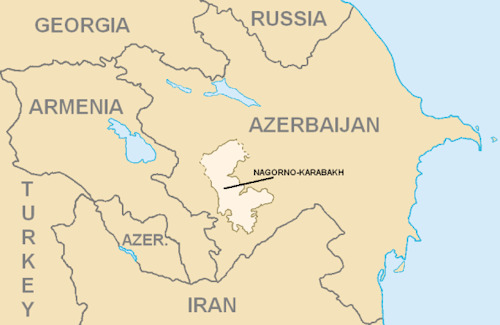 During those two years full of events on the ground, the aforementioned Caucasian states waged war with each other, witnessed a Turkish resurgence and finally were hit by the offensive of Soviet Russia which reincorporated them into the nascent Soviet Union. as "constituent republics" of the new "Soviet state". It was on this occasion that the real "experiment in social and geopolitical engineering" took place when Stalin decided to divide those border lands in the following way: Soviet Armenia was assigned the area of Zangezur which became known from that moment on as "Syunik province" and which is still part of the new Republic of Armenia, the territory of Naxçıvan was instead assigned to Soviet Azerbaijan becoming in effect a separate exclave from the rest of the country (a role that it plays entirely today), just as all the remaining territories of the old khanate were assigned to Azerbaijan with the footnote that, in the area once part of the five "Melikhati" described above and where the Armenian population was stronger and more rooted in the territory, the authorities the Soviets carved out an “Autonomous Region of Nagorno-Karabakh”, visible in “figure 4”. It was this bizarre territorial partition that laid the foundations for decades of instability at the local level, the premise for the tragedy we have been experiencing from the late 80s until today after the end of the oppressive force of Communism once again freed the specter of local nationalisms. pushed. This is the only true story, step by step, of how the territory of Nagorno-Karabakh (Artsakh) became "part of Azerbaijan", if it was ever really part of it from a cultural and identity point of view, well, I leave it to the readers to decide.
During those two years full of events on the ground, the aforementioned Caucasian states waged war with each other, witnessed a Turkish resurgence and finally were hit by the offensive of Soviet Russia which reincorporated them into the nascent Soviet Union. as "constituent republics" of the new "Soviet state". It was on this occasion that the real "experiment in social and geopolitical engineering" took place when Stalin decided to divide those border lands in the following way: Soviet Armenia was assigned the area of Zangezur which became known from that moment on as "Syunik province" and which is still part of the new Republic of Armenia, the territory of Naxçıvan was instead assigned to Soviet Azerbaijan becoming in effect a separate exclave from the rest of the country (a role that it plays entirely today), just as all the remaining territories of the old khanate were assigned to Azerbaijan with the footnote that, in the area once part of the five "Melikhati" described above and where the Armenian population was stronger and more rooted in the territory, the authorities the Soviets carved out an “Autonomous Region of Nagorno-Karabakh”, visible in “figure 4”. It was this bizarre territorial partition that laid the foundations for decades of instability at the local level, the premise for the tragedy we have been experiencing from the late 80s until today after the end of the oppressive force of Communism once again freed the specter of local nationalisms. pushed. This is the only true story, step by step, of how the territory of Nagorno-Karabakh (Artsakh) became "part of Azerbaijan", if it was ever really part of it from a cultural and identity point of view, well, I leave it to the readers to decide.
POINT NUMBER 2: It is obvious that the 1988-1994 “Nagorno-Karabakh War” created a humanitarian drama of enormous proportions, yet this humanitarian disaster was on both sides and not one way! The UNHCR data, the most reliable we have, speak of a total of 724.000 Azeris who were expelled from the territories of Armenia, Nagorno-Karabakh (Artsakh) and the surrounding areas to which 500.000 Armenians expelled from the Naxçıvan and the rest of the territories of Azerbaijan, especially the capital, Baku, which they had literally helped to build and flourish from a cultural point of view. When humanitarian tragedies take on such great proportions it simply makes no sense to point the finger at one rather than the other side, however there is an important distinction that needs to be made in this situation. Nagorno-Karabakh (Artsakh) and the surrounding areas were the scene of what was probably the most brutal and brutal of all the wars of the ex-Soviet space, literally fought village after village, mountain after mountain and valley after valley , where both contenders made extensive use of artillery pieces and tanks in areas from which, more often than not, it was simply impossible to evacuate the civilian population. It is obvious that, in such a nightmare scenario, civilian casualties on both sides soared and there were also severe human rights violations by Armenian fighters against Azerbaijani civilians, the most famous of which was the massacre. by Khojaly. However, this war was also characterized by frightening episodes of pogroms committed by Azerbaijani nationalists against unarmed Armenian civilians who lived in inland areas of Azerbaijan, very far from the combat areas.. Hundreds, perhaps thousands, of ethnic Armenian civilians were often killed with medieval fury and cruelty during massacres organized in Sumgait, Kirovabad and even in the capital Baku and the same crowds of Azerbaijani rowdies then also attacked Georgians, Ossetians, Jews, Russians and people of other ethnic groups stopping only when, after a culpable delay lasting seven days, the Soviet troops intervened by repressing the revolt in blood (the so-called “Black January” of 1990). None of this happened in Armenia! The Armenian nationalists in the Republic of Armenia were responsible for the expulsion of about 200.000 local Azeris and there were also numerous episodes of violence there but there was no organized massacre of Azerbaijani civilians in the territory of the Republic of Armenia and the Azerbaijani dead in those situations there were about twenty, all due to isolated acts of violence and not to massacres organized from above as it happened within the territory of Azerbaijan. This is a critical and very important difference which, despite the immorality of war, cannot be ignored! And, yes, at the end of the "Nagorno-Karabakh War", the Armenian unified forces found themselves in possession of a territory equal to 20% of the surface of Azerbaijan including almost all the territory of Nagorno-Karabakh (Artsakh) and the districts surrounding but this result is attributable to the conduct of military operations and maintaining possession of these territories proved necessary to ensure the safety of the civilian population of Nagorno-Karabakh (Artsakh) from the not so veiled attempts of the Baku leadership to commit genocide . Point. There are far too many omissions in point 2 as it was presented by the teacher.
POINT 3: I think a lot of things need to be specified here. Although the country's constitution is marked by "secularism" and the absolute majority of the population is Shiite Muslim (albeit in a decidedly lukewarm, not to say cold way), Azerbaijan, in its authentic identity, is not "a secular state ”, And it is not even“ a Shiite Muslim state ”. Azerbaijan is first of all a "post-Soviet" country, with all the limitations that the words "post-Soviet" entail. Secondly, it is a state that is rapidly losing its autonomous connotations and is increasingly slipping into the turkey vortex with all the consequences that I leave readers to imagine and which I will not dwell on because they are not the subject of this analysis. Moreover, this trend is absolutely in line with the history of that territory given that over the last few centuries the elites of the country were first Persianized, then Russified and now Turkishized, testifying to the fact that, going to scratch deeply, Azarbaijan and the Azeris in general do not have a true national identity and have always lived on the periphery of great empires, absorbing their dominant culture, customs and ideology, in this differentiating themselves clearly from the Armenians and Georgians who instead developed coherent national cultures and have always defended them with tooth and nail even when they have been incorporated into the territories of the largest foreign empires. Azerbaijan is a family dictatorship in which the current president, Ilham Heydar oglu Aliyev has ruled for 17 years (with his wife Mehriban Arif qizi Aliyeva appointed as vice-president!) Having inherited power from his father Heydar Alirza oglu Aliyev the who during his long life was for 25 years, between 1944 and 1969, an officer at various levels of the Azerbaijani KGB, Secretary of the Communist Party of Azerbaijan, between 1969 and 1982, member of the Politburo of the Union Soviet from 1982 to 1987 and finally president of independent Azerbaijan from 1993 to 2003 when he finally died. How is it possible that he keeps silent about these facts with such ease? Regarding my claims that Azerbaijan has heavily employed foreign militias in its interminable wars against the Armenians, from the early 90s to the present, including ISIS-led militias (and through the Gray Wolves, the Islamists Chechens, the Afghans of Hezb-e-Islami, the Syrian jihadists, etc ...) Well I said it and I repeat word for word what was stated in the article "Caucasian Chaos". There is a vast literature on the subject, not least by the ICT (Institute for Counter-Terrorism) itself, so it is up to those responsible to prove that I and a series of other geopolitical analysts are wrong, bringing counter-evidence. However, I promise that I will come back to this topic again in other future analyzes since it is an issue of great interest also from the point of view of international security. But I cannot end this analysis without speaking to the public of readers about a very important aspect that characterizes Azerbaijan's hostility towards "everything Armenian", namely the destruction of Armenian cultural heritage by Azerbaijan. Thanks to interactions of all kinds lasting millennia, the Armenians had left very important traces in the archaeological history and architecture of the neighboring Caucasian. In the Naxçıvan region, as mentioned one of the cradles of the Armenian people, the researchers Argam Aivazian (Armenian native of the place) and Steven Sim (Scottish) documented the existence of a very rich cultural heritage of Armenian origin during the 80s. publication of 80.000 photographs and drawings representing among others a total (according to the authors incomplete) of 218 churches, monasteries and chapels, 41 castles, 26 bridges, 86 sites of cities and villages, 23.000 tombstones and, above all, 4500 crosses of stone, the legendary “khachkar”, which represent perhaps the most important mark of Armenian culture in every historical era. In particular, in the vicinity of the city of Julfa there was a unique cemetery in the world consisting of a "forest" of khachkars that rose by the thousands (10.000 according to the French missionary Alexandre de Rhodes who visited the area in 1648) in an open space located along the course of the Aras river. Well, in the years following independence, after having first cleaned up the area from the last remaining Armenians, the last heirs of an uninterrupted multi-thousand-year presence just like in Nagorno-Karabakh (Artsakh), Azerbaijan has systematically destroyed all traces of the archaeological heritage and Armenian architecture present on its territory, operating a cultural genocide even worse than that caused by ISIS in Syria and Iraq. Between 1998 and 2002, the 3000 khachkars and 5000 tombstones that were still found in the Julfa cemetery (including some very rare and very precious tombstones bearing the Armenian ram motif dating back to the pre-Christian period, which cannot be found anywhere else. place on Earth) were methodically torn down, split and shredded by Azerbaijani soldiers until they were literally reduced to dust and then dumped into the Aras riverbed. These destructions then reverberated throughout the country (with the exception of Nagorno-Karabakh of course!) So much so that today the only two Armenian churches still standing in Azerbaijan are the church of the village of Kish (but only because in the course of history it subsequently became first an Albanian-Caucasian church and then a Georgian church, then it was something else, in addition to being Armenian) and the church of San Gregorio the Illuminator located in Baku but permanently closed and today used as a warehouse.
In conclusion, the author of this analysis believes that he has given readers, both on "Caucasian Chaos" and on today's analysis, a great deal of information that they themselves can search and verify in complete freedom and following their intellectual curiosity also on open sources in languages other than Italian, always trusting in the goodness of my work and my analytical method and knowing that the Truth, the one with a capital "V", does not need translation.
Photo: Republic of Armenia MoD / web



